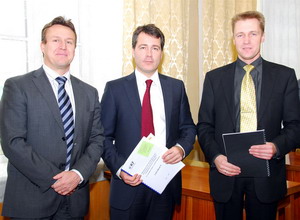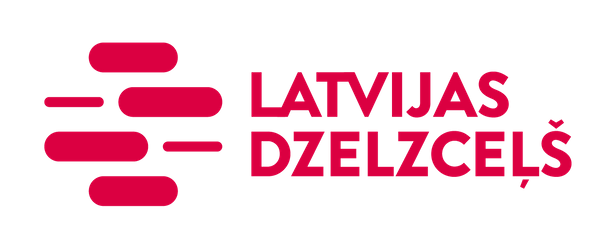State Joint Stock Company “Latvijas dzelzceļš” (LDz, Latvian Railway) continues to invest capital in the reconstruction of railway infrastructure. Recently there has been launched the second stage of the project “Modernization of Train Management System (the East-West rail corridor in Latvia)”.
Total costs of the project are 89.951 million EUR, but the estimated costs for the construction works of the second stage reach 40.999 million EUR. It is planned to finish the works within 30 months.
The East-West corridor is the main railway artery in Latvia that links together Europe and the regions of Asia with the ports of the Baltic Sea in Riga, Ventspils and Liepāja. More than 40 million tons of transit cargoes are transported through this corridor per year.
From year 2001-2008 LDz has been running five projects estimating total of 167.6 million EUR. To carry out these projects the funding has been raised from the Cohesion Fund that covers on average 80% from the direct costs. These funds are disposed for the realization of important projects concerning the development of infrastructure and enhancement of security.
In 2003 LDz began to change the turnouts within the East-West rail corridor. Currently there are being realized the works of the second stage of this project (the costs for the second stage of the project are 17.4 million EUR).
In June 2004 there had been started a construction of the reception yard of the railway station Rēzekne 2 (total costs of the project are 9.4 million EUR); it was finished in May 2006.
In 2006 there has been launched a railway track reconstruction project with an aim to reconstruct 265 km of railway tracks.
The project “Modernization of Train Management System (the East-West rail corridor in Latvia)” is one of the biggest projects regarding the costs.
On 21 February 2002 there was signed a Financial Memorandum among the Republic of Latvia and the European Union on the funding of 89.951 million EUR for this project. The first stage of the project has been started in 2005. According to the final report of the tender for the second stage works of the project which was organized by the Ministry of Transport of the Republic of Latvia in 2007 the most successful was a consortium Bombardier (Sweden)/Belam-Riga (Latvia) which proposed high technology at the lowest prices. In 2007 a consortiumSAFEGE Consulting Engineers (France)/Baltic Project Consulting succeeded in the tender for the supervision of the works of the second stage of the project.
Train management systems ensure safe organization of the train traffic for both the stationmasters on duty and the traffic controllers in their dispatch stations wherefrom they can manage and control 10-15 railway stations. This particular system of train management includes control equipment of the turnouts and signal lights in the stations; control equipment of signal lights in the spans (autoblock system); equipment in the dispatch stations (dispatch centralization system DC); alarm control equipment of the level crossings and power supply equipment. The above-mentioned equipment in the corridor is based on the relay technology and had been used in the maintenance works mainly in the 1960s and 1970s. Nowadays this equipment is not functional anymore.
To carry out the project the works were organized into two stages and for each of the stage there was announced a tender to select a contractor and a supervisor.
In the second stage of the project there were involved several stations – Jelgava, Krustpils-Rēzekne (except the stations of Krustpils and Rēzekne), Krustpils-Daugavpils (except the stations in Daugavpils), as well as the junction of Daugavpils.
The second stage of the project includes the following operations within the East-West rail corridor:
- Replacement of the control systems of the turnouts and signal lights in 22 stations;
- Replacement of the autoblock system/ setting of the system in 210 km long railway track distance;
- Elaboration of the dispatch centralization system in Daugavpils;
- Reconstruction of the overhead power supply high voltage lines in 9 km long railway track distance;
- Modernization of the control system in 44 level crossings.
It is necessary to do planning, setting-up, system testing, personnel training, as well as to install the underground system and prepare the premises for the new equipment in order to implement the project.
Within 30 months from the beginning of the project implementation the existing equipment will be replaced with up-to-date microprocessor based systems with higher security and wider functional options, which will enhance throughput and will ensure high security traffic.
The new equipment complies with the EU requirements and standards.
According to the contract there is a 24-month period from the moment the equipment starts to operate for the notification of the imperfections in which all the imperfections of the system have to be eliminated.
____
Persons in the photo from right: Per Allmer (Bombardier), Ugis Magonis (Latvian Railway), Andulis Zidkovs (Ministry of Transport and Communication)
Foto — Andris BIEDRIŅŠ


